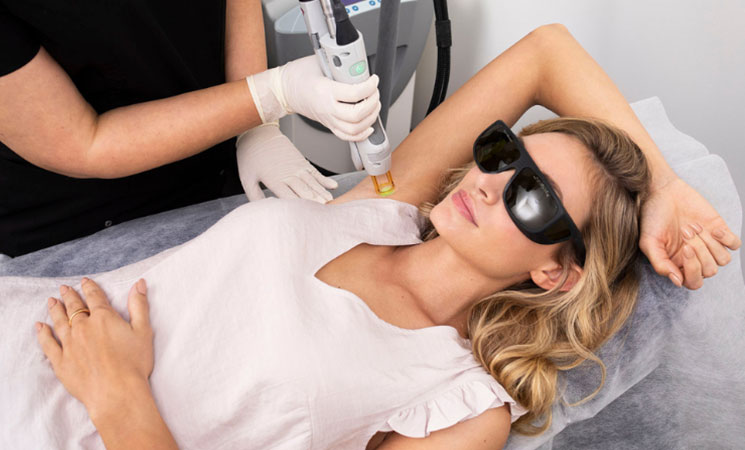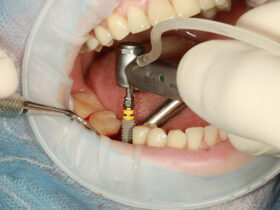Key Takeaways
- Laser hair removal is a long-lasting method for reducing unwanted hair.
- Proper preparation and post-treatment care are crucial for optimal results.
- Most people experience minimal side effects, making it a safe procedure.
- Multiple sessions are usually needed for the best outcomes.
Introduction
Laser hair removal has become a popular solution for effectively and efficiently reducing unwanted hair. This cosmetic procedure uses concentrated light to target hair follicles, resulting in long-term hair reduction after multiple sessions. Knowing what to expect before, during, and after each session can help you maximize the benefits and ensure a smooth, comfortable experience.
Preparation for Laser Hair Removal
Preparation is essential for achieving the best laser hair removal treatment results. It involves several steps to make sure your skin is in the optimal state for the procedure:
- Avoid Sun Exposure: Before the treatment, limit your time in the sun and avoid tanning for at least two weeks. Tannished skin may increase the likelihood of adverse effects.
- Avoid Other Hair Removal Methods: Six weeks before your appointment, avoid electrolysis, waxing, or plucking. These methods remove the hair roots necessary for the laser to be effective.
- Shave Before Your Appointment: Shave the treatment area 24 to 48 hours before your session. The laser can target the hair follicles under the skin without burning the visible hair.
- Avoid Skin Irritants: To avoid skin sensitivity, avoid irritating skin products, such as retinoids or exfoliants, several days before your appointment.
During the Procedure
Any worry or anxiety can be reduced by being aware of what occurs during your laser hair removal session:
- Consultation: A preliminary consultation is usually conducted to assess your skin, hair, and medical history. This ensures that laser hair removal is suitable for you.
- Preparation: You’ll be given protective eyewear to shield your eyes from the laser light. The treatment area will be cleaned and prepped.
- The Laser Application: The practitioner will use a handheld device to deliver laser pulses to the target area. The patient may experience a tiny stinging sensation like a rubber band snapping against their skin.
- Duration: Depending on how big the area needs to be treated, the session’s duration can vary greatly. It only takes a few minutes to do smaller areas, like the upper lip, but up to an hour for larger areas, like the back or legs.
Immediate Aftercare
Post-treatment care is vital for avoiding complications and ensuring the best results:
- Avoid Sun Exposure: To protect the treated area, avoid direct sunlight and apply a broad-spectrum sunscreen with an SPF of 30 or higher.
- Cold Compression: Apply cold packs or soothing gel to reduce redness and swelling.
- Avoid Heat: Hot showers, saunas, and physically demanding activities that could make you sweat should be avoided as they might irritate the area that has been treated.
- Moisturize: Moisturize the skin with a gentle, fragrance-free lotion to aid healing.
Long-term Results
Usually, several sessions are needed for laser hair removal to produce the desired effects. Because hair grows in cycles, the laser works best when the hair is actively growing. Here’s what to expect:
- Multiple Sessions: Most individuals require 6–8 sessions spaced 4–6 weeks apart for best results. This is because not every hair follicle is active at the exact moment.
- Gradual Reduction: You will notice a gradual reduction in hair growth. The hair that does regrow will often be finer and lighter.
- Maintenance Sessions: Occasional maintenance sessions may be required to maintain the results, especially for hormonal areas like the face.
Managing Side Effects
The procedure is generally safe, but some side effects may occur. Here’s how to manage them:
- Redness and Swelling: These are the most common side effects and usually subside within a few hours to a few days. Use cold packs and soothing creams to alleviate discomfort.
- Skin Irritation: Mild itching or irritation may occur. Follow your practitioner’s advice to avoid scratching and use a hydrocortisone cream if necessary.
- Pigmentation Changes: Although rare, some individuals may experience temporary changes in skin pigmentation. These typically resolve on their own over time.
- Blistering or Scarring: Selecting a skilled and experienced practitioner can help minimize these uncommon but severe side effects.
Conclusion
Laser hair removal can provide long-lasting hair removal with less maintenance requirements and smoother skin. By adequately preparing for your sessions and following post-treatment care guidelines, you can enjoy the numerous benefits of this popular cosmetic procedure. While multiple sessions are usually needed, the results are worth the commitment. Remember, consulting with a qualified practitioner and discussing your specific needs and expectations will help ensure that laser hair removal is a successful and satisfying experience.









